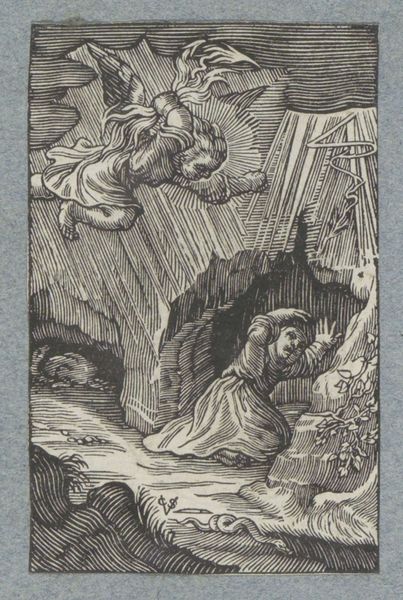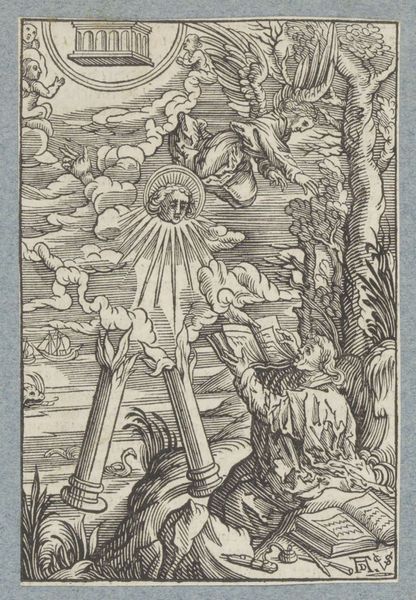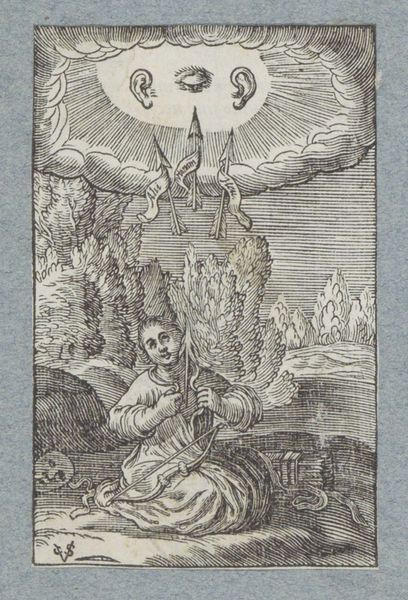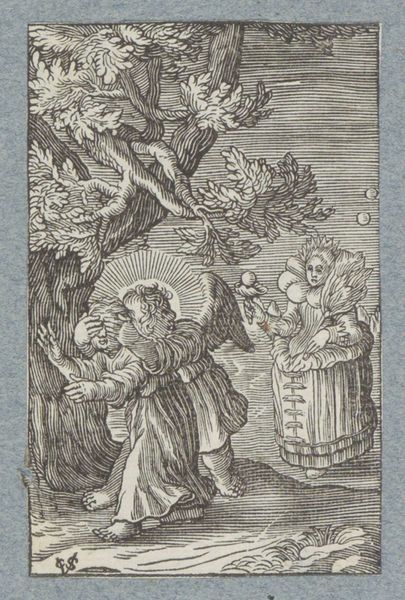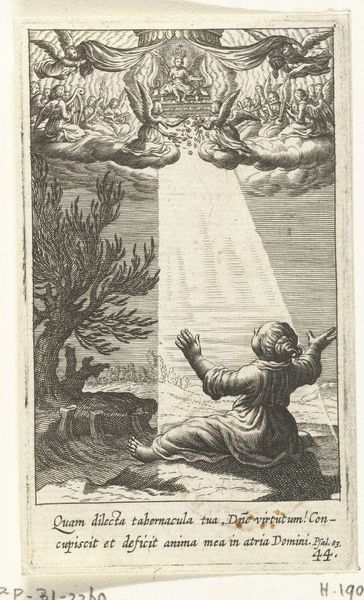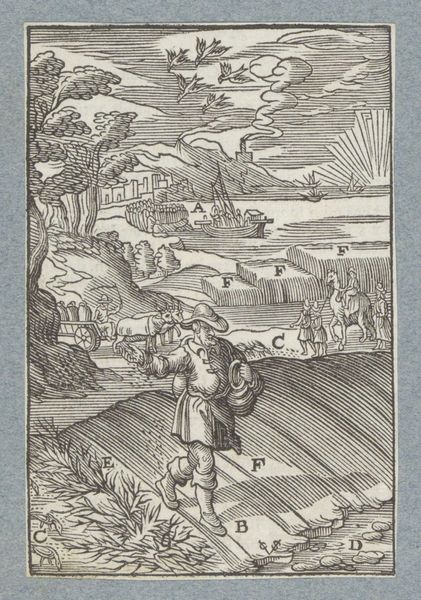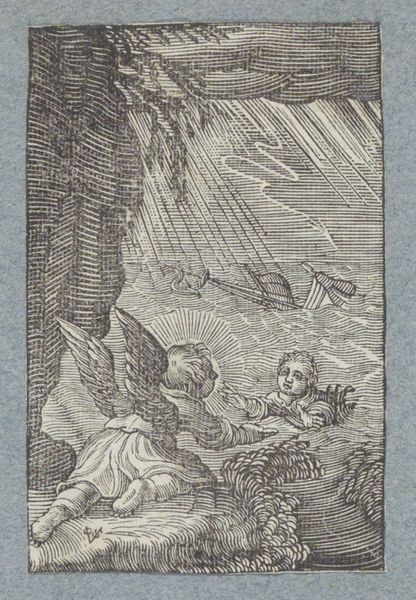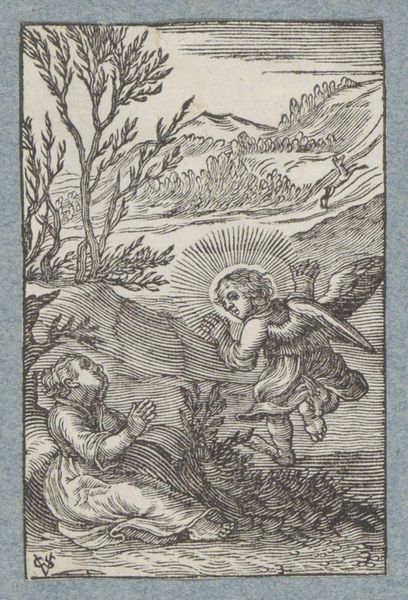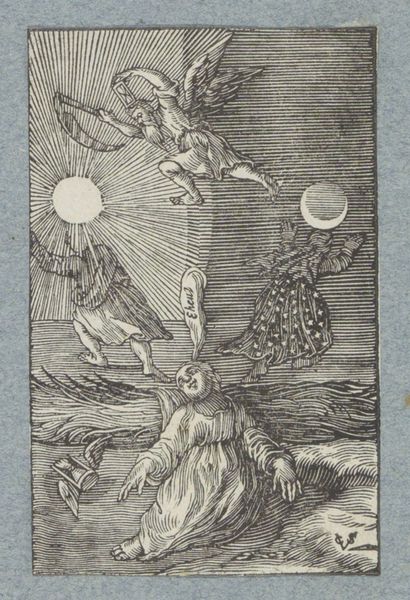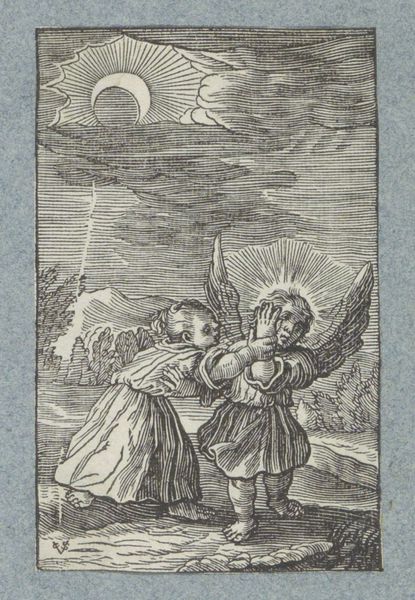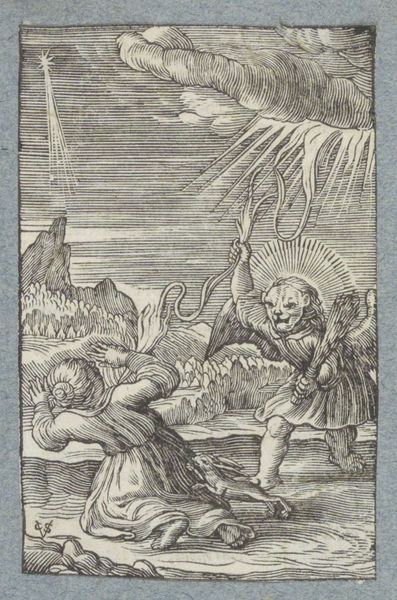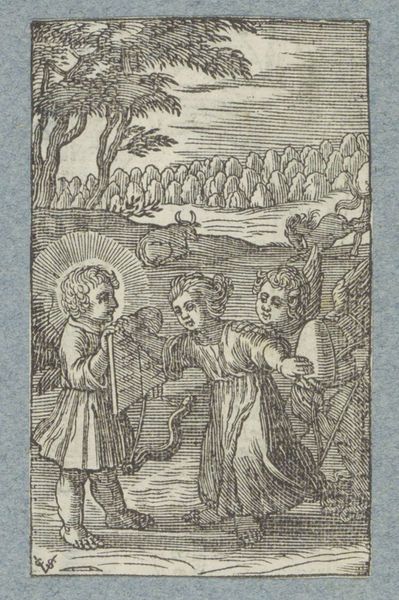
Kind op aarde zit in lichtstralen van tronende engel in hemel 1628
0:00
0:00
christoffelvaniisichem
Rijksmuseum
print, engraving
#
allegory
#
baroque
# print
#
landscape
#
figuration
#
line
#
engraving
Dimensions: height 83 mm, width 54 mm
Copyright: Rijks Museum: Open Domain
Editor: So, here we have "Child on earth sits in rays of light from a throned angel in heaven" by Christoffel van Sichem II, an engraving from 1628. The figure is being struck by what looks like a divine ray. It feels...dramatic, but in a restrained, Old Master sort of way. How do you interpret this work? Curator: Well, looking at this print through a historical lens, we see a convergence of religious and social forces that shaped its meaning. Consider the rise of printmaking itself. This wasn't simply about creating images; it was about disseminating ideas, controlling narratives. Editor: I see... it's not just the image but also how it was circulated. Curator: Exactly! The artist is using visual rhetoric to influence viewers and shape their understanding of their relationship to the divine. Think about the period—the Reformation was still casting a long shadow. Visual depictions of faith were inherently political acts. What sort of viewer was this artwork designed for? How might it have been used or perceived by different social classes? Editor: It makes you think about accessibility. Prints were more affordable than paintings, right? Perhaps this imagery aimed to influence a broader audience. But I hadn't really thought about the act of reproduction being such a powerful tool in shaping ideology! Curator: Precisely. The print medium allowed religious iconography and related world views to spread, contributing to religious and political agendas. The landscape and allegory aren't just pretty scenery or narrative devices. They are elements loaded with cultural and institutional context. This work then becomes part of a much bigger conversation about religious expression. Editor: That really changes how I see it. It's not just an illustration; it's a tiny piece of a larger power structure. Curator: Indeed. The political ramifications of distributing such imagery provides crucial insight into its meaning. Editor: Thanks, it gives the artwork and the context so much meaning now.
Comments
No comments
Be the first to comment and join the conversation on the ultimate creative platform.
